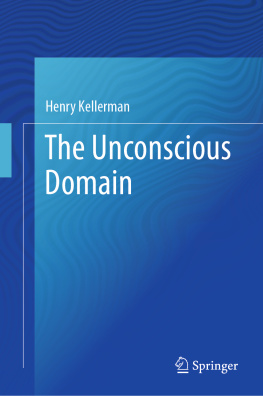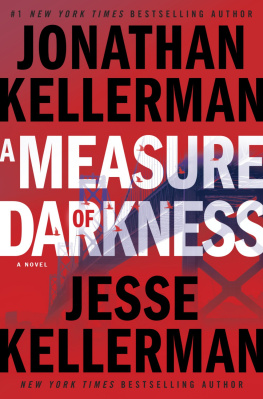THE
The Simple Effective
Way to Cure Our
Emotional Symptoms
HENRY KELLERMAN, Ph.D.

ROWMAN & LITTLEFIELD PUBLISHERS, INC.
Published in the United States of America
by Rowman & Littlefield Publishers, Inc.
A wholly owned subsidiary of The Rowman & Littlefield Publishing Group, Inc.
4501 Forbes Boulevard, Suite 200, Lanham, Maryland 20706
www.rowmanlittlefield.com
Estover Road
Plymouth PL6 7PY
United Kingdom
Copyright 2007 by Rowman & Littlefield Publishers, Inc.
All rights reserved. No part of this publication may be reproduced, stored in a retrieval system, or transmitted in any form or by any means, electronic, mechanical, photocopying, recording, or otherwise, without the prior permission of the publisher.
British Library Cataloging in Publication Information Available
Library of Congress Cataloging-in-Publication Data
Kellerman, Henry.
The 4 steps to peace of mind : the simple effective way to cure our emotional symptoms / Henry Kellerman.
p. cm.
Includes index.
ISBN-13: 978-0-7425-5878-6 (pbk. : alk. paper)
1. Psychoanalysis. 2. Symptoms. 3. Psychotherapy. I. Title. II. Title: Four steps to peace of mind.
RC506.K438 2007
616.89'17dc22
2007015692
Printed in the United States of America
 The paper used in this publication meets the minimum requirements of American National Standard for Information SciencesPermanence of Paper for Printed Library Materials, ANSI/NISO Z39.48-1992.
The paper used in this publication meets the minimum requirements of American National Standard for Information SciencesPermanence of Paper for Printed Library Materials, ANSI/NISO Z39.48-1992.
To the memory of
Nathan Kamen
teacherdear friendgreat pathfinder
CONTENTS
About the Author
INTRODUCTION
This anxiety is driving me crazy, a woman said. A man said: I cant stop counting everything I docount, count, countsee, I said it three times. Another woman cried: Im always cryingat the slightest thingdamn it. Answering for her husband, still another woman said: He cant face going to any social thingparties, weddings, anything. And then there was the man who reported that every night before he could go to sleep, he would need to check the locks on his front doorover and over, he said. And how about this man who said, Things pop into my head and sometimes they scare me, like I might do something wrong to someone. And then, while holding a handkerchief over his mouth, another man said: I dont touch doorknobs, or light switches, or anything thats loaded with germs.
All of these people are talking about their psychological symptoms. Migraine headaches, fear of heights, fear of open spaces, scary thoughts that you cant shake, obsessions, ritual behaviors, compulsions, and thousands of others. Have you ever had any? Not to worry. Actually, just about all people have such symptoms at one time or another.
When I first trained as a psychologist and then as a psychoanalyst, these were some of the problems that interested me. So, in the past nearly fifty years, Ive worked with people in clinics and hospitals, as well as in private practice, and have had the chance to see all kinds of symptoms up close. In most cases, when I asked them, patients would usually say that it was their main relationship (or not having one) that bothered them. Yet, what they would always, always say when it came to the cure, was that it was their symptom that they wanted cured.
WHAT IS AN EMOTIONAL/
PSYCHOLOGICAL SYMPTOM?
When people sense that theyre having an experience that they cant control, its a good bet that theyre already in touch with the eerie presence of a symptom. An emotional/psychological symptom, therefore, is some experience that you feel is really out of your control. Basically, you just cant control it. Rather, your symptom controls you, and on top of it all, theres not much you can do about it. The symptom will dominate you. Its at such times that you know that some inner forcedifferent and greater than the force of your conscious mindis present. And so, if youve ever had such an experience, then you know that it feels strange, its definitely inconvenient, and, a lot of the time, its even downright embarrassing.
DOES ANYONE KNOW HOW TO CURE A PSYCHOLOGICAL SYMPTOM?
Over the years, I slowly began to tease out the core elements of the symptomto see insideinto how a psychological symptom works, how it develops, and how curing it might then be accomplished. The fantastic fact is that psychotherapists have never really had a map or an instruction manual that they all could follow so that any symptom could be unlocked and cured. Yet, even though psychotherapists know a great deal about the process of psychotherapeutic treatment, the sad fact is that nowhere is there any spelled-out technique that therapists use to systematically penetrate the symptom and then cure it. Well, the symptom cant just be wished away and it cant be reasoned withit wont listen! To cure the symptom, you need to know its codewhat its made of. Even Sigmund Freud, who told us a lot about symptoms, never set forth the equation, the formula, the basic code of the symptom, so that then we would know how to reach into its core and cure it.
WHAT THIS BOOK AIMS TO DO
Exactly such a formulaa symptom code, as I call itwill be set forth in this book. When used, this formula can unfold, penetrate, and cure the symptom. In other words, it is my aim that a person can use this book to understand, alleviate, and, yes, even cure, his or her own symptomand thereby gain a greater measure of peace of mind. In some cases, a combination of the symptom code and medication is needed to improve or alleviate a symptom.
In , I describe the four points of the symptom code, which Ive briefly outlined here:
THE FOUR POINTS OF THE SYMPTOM CODE
1. Point One. That you have a wish but you may not realize its presence.
2. Point Two. That you are angry, although you may not be aware of it.
3. Point Three. That you are angry at someone specifica who.
4. Point Four. That you need to do something about Point 1the wish.
In .
When you finally see or understand the answer to each of the four points outlined aboveyou recognize that you have a wish, that you are angry at a specific person (a who), and that you need to do something about itthen you will be well on your way to curing your symptom. Now, lets begin.
I
THE KEY TO UNLOCKING
THE SYMPTOM
The One, Two, Three, and Four of Symptom Cure
1
POINT ONE IS THE WISH
It all starts with wishes. Almost all things are wishes. We are all wish soaked creatures. What this means is that people have all kinds of wishes, all the time. And on top of that, we usually make no distinction between big wishes and little wishes. Theyre all big to us! We want what we want when we want it. And this is true of all of us. Basically, the wish comes out of whats known as the pleasure principle. This means that people want to feel good, satisfied, content, gratified, and pleasured, all the time. People want to be free of unpleasant feelings. The problem is that life is constructed in such a way that our wishes usually are not met. Or, if they are met, theyre usually not exactly how we would have wanted them met. Or, if they are met as we wanted, then its frequently the case that theyre not met exactly when we wanted them. Or, if our wishes are met precisely when we wanted them, then its usually not to the fullest measure.











 The paper used in this publication meets the minimum requirements of American National Standard for Information SciencesPermanence of Paper for Printed Library Materials, ANSI/NISO Z39.48-1992.
The paper used in this publication meets the minimum requirements of American National Standard for Information SciencesPermanence of Paper for Printed Library Materials, ANSI/NISO Z39.48-1992.